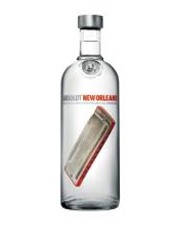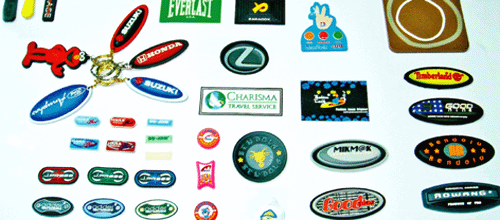 FORTUNE: Lingerie retailer Bare Necessities spiced up sales by making it easier for women to find undergarments that fit online.
FORTUNE: Lingerie retailer Bare Necessities spiced up sales by making it easier for women to find undergarments that fit online.
When we last met Bare Necessities, the lingerie seller, based in Avenel, N.J., was profitable but battling a personality problem: It lacked one. Enter FSB’s Makeover artists – five experts from Frog Design, the product design and branding firm known for its work with Apple. The Frog team led company employees in creative exercises that sparked fixes, which CEO Noah Wrubel says boosted growth.
“Business is unbelievable,” he says. The family-owned firm won’t give figures, but an industry magazine pegged its 2006 web sales – now about 90% of revenue – at $26.2 million, bringing total sales for that year to around $29 million. In 2005, Bare Necessities had total sales of $21 million. This year sales should hit $35 million.
The Makeover revealed that many women find buying underwear tedious and ego-deflating. Guided by the Frog session, the company revamped its branding and website (barenecessities.com) to change that. Now the site gives advice on fashion, quality, and, most important, fit. To execute this work, the company set up a new web-focused creative department and hired Victoria’s Secret veteran Jessica Jackson as vice president of E-commerce, a new post.
Move over, Victoria’s Secret [FORTUNE]
Category: Branding
Going Local
 Influx Insights: One of the secrets behind the new premiums was that they didn’t rely on advertising, instead they found a way to get the bar staff and bar tenders on their side and used the power of recommendation.
Influx Insights: One of the secrets behind the new premiums was that they didn’t rely on advertising, instead they found a way to get the bar staff and bar tenders on their side and used the power of recommendation.
Even though the brand’s owner, the Swedish government is due to sell its prized asset, early in the year, Absolut broke a new ad global campaign and yesterday launched a fascinating new initiative.
Absolut is known for its bottle, but also its flavors, at one moment in the late 90s, it seemed like the brand was launching a new flavor a week. The brand is now taking its flavor story in a new direction by launching flavors named after locations with specific recipe designs.
The first one out of the gate is Absolut New Orleans- mango flavor with a black pepper kick. The new flavor will be limited to a run of 35,000 cases.
This is a very interesting development for a brand trying to escape from the tyranny of ubiquity by becoming more local and limited. It allows Absolut to be relevant to important drinks markets and gives them the opportunity to create a new conversation with bar tenders.
Absolut Local [Influx Insights]
Differentiation Strategy
 BusinessWeek: Just because there is no one selling a particular product or service doesn’t mean it’s automatically a good idea to try. Conversely, a competitively crowded industry shows that demand exists, as well as a viable market. The key to business success isn’t finding an empty field, but defining your company narrowly—no matter how crowded a marketplace you’re entering.
BusinessWeek: Just because there is no one selling a particular product or service doesn’t mean it’s automatically a good idea to try. Conversely, a competitively crowded industry shows that demand exists, as well as a viable market. The key to business success isn’t finding an empty field, but defining your company narrowly—no matter how crowded a marketplace you’re entering.
There are many ways you can differentiate your company, says Reid Carr, president of Red Door Interactive, a small Web development firm based in San Diego. “You can choose to sell to different people, such as small businesses; you can find new distribution channels; you can stratify the industry’s price points by introducing a luxury class; or, you can redefine your selling proposition,” he says, noting how Starbucks (SBUX) revolutionized the coffee shop by selling an experience rather than just a beverage.
However you choose to be different, you must be great at the basics and exceptional at your defining factor, Carr says. “The key here is to know who you are and who you are not.” Another way to get a toehold in a mature market is to watch for change or stagnation in that industry and capitalize on it. “Even in highly competitive industries—perhaps even more so than in noncompetitive markets—there are external and internal market forces that will create change in the dynamics,” says Eric Basu, president and CEO of technology firm Sentek Consulting in Mission Hills, Calif. “Successful companies and entrepreneurs aspiring to enter a competitive market will observe the winds of change and seize opportunities arising from changes. A successful entrepreneur will often have prepared for entry into the industry by securing capital, establishing connections, possibly occupying a sentry position, and otherwise laying the groundwork for opportunity.”
Starting a Business in a Crowded Market [BusinessWeek]
Small Brand Advantage

Inc.com: Whether it’s quality, selection, product knowledge, or customer service, small retailers can leverage a stronger brand identity to take on big-box competitors. For far too many large corporate retailers, their primary strategy is to build sales through low prices, to leverage their sheer size into economies of scale that drive down their costs and allow them to offer the lowest possible prices. Their entire business model is built on volume, and the primary tool of choice in their toolkit is price promotion. Sales, circulars, coupons, special events — however the promotion is structured — the offering is built around price.
Building brand equity for your store is a critical element in maintaining pricing integrity, protecting margins, and assuring long-term profitability. Building brand equity requires clarity of purpose. When customers think of you, they will focus on the one thing at which you excel. Focusing yourself and all of your people like a laser beam on that one thing, whether it be quality, selection, product knowledge or customer service, and building everything you do around that core mission, is the key to building retail brand equity.
Building Brand Equity [Inc.com]